9 tips to avoid blisters and injuries to feet
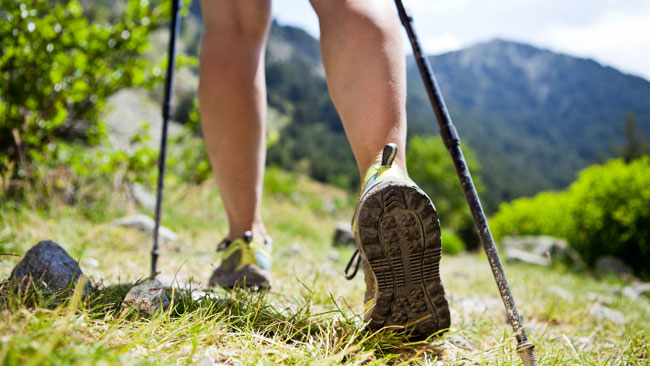
2017 has been, and still is, a year rather intensive side hike to your servant. The 300km are met, and the year is not over. But all this did not go without having to conquer and domesticate the number one problem I was hanging out for decades years: the blisters on the feet.
At home, we call it blisters, in fact. And the medical term is blister. But that is not important: the cause of bulbs is the heating of the skin of the foot due to friction. In General, avoid any friction or rough edges in his shoe.
In 9 points, that's how I conquered definitively the problem:
1 – good socks
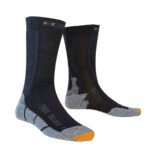 Some will be surprised to see that this point is mentioned first: is still of fundamental importance: worn socks are important in more than one way: they reduce the friction, absorb moisture and influence on the comfort. In addition, there is a clear evolution of the products in this area in recent years.
Some will be surprised to see that this point is mentioned first: is still of fundamental importance: worn socks are important in more than one way: they reduce the friction, absorb moisture and influence on the comfort. In addition, there is a clear evolution of the products in this area in recent years.
There are an infinite number of patterns and characteristics: at the time of the writing of this article, there's 1747 "hiking mens socks" models at Amazon. You need to try several to see which are right for you.
Some say that we need 2 pairs of socks, or that you should never wear clean socks: these are old habits that no longer have a reason to be with new products that are now on the market.
2 – good shoes
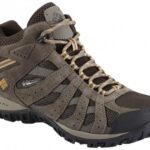 It is obvious, but it takes that your shoes are adapted to your feet: they hang at least one size larger than his shoes. Remember that, during a hike, feet swell. However, we should not fall into the other extreme, because the effect will be disastrous if we "floats in his shoe".
It is obvious, but it takes that your shoes are adapted to your feet: they hang at least one size larger than his shoes. Remember that, during a hike, feet swell. However, we should not fall into the other extreme, because the effect will be disastrous if we "floats in his shoe".
Low shoe or shoe rising? Of course, it depends on the type of hiking you make. Though: If we stick to the topic of this article, a rising shoe will provide more support, so avoid blisters. In addition, a rising shoe offers more outfit ankle. So according to me, there's no doubt: he must focus on the rising shoe, unless your goal is a walk along a canal in the Netherlands.
Maintain your shoes: make sure that they have no defects that might hurt the foot. Train them before a long run.
3 – pills ointment
It has been for me a fundamental success criterion: there are specialized ointments that solidify the epidermis, regulate moisture and, above all, to facilitate the friction between the skin and the sock, or even between different toes. It is really not a gimmick and the positive effect is obvious.
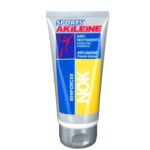 An ointment of this type apply ideally several days before the hike, to prepare the walk. But an application the same day also has an effect that is sufficient in most cases.
An ointment of this type apply ideally several days before the hike, to prepare the walk. But an application the same day also has an effect that is sufficient in most cases.
I tested several of these creams: the most effective and enjoyable, it is also the most widespread: the Sports Akileïne NOK pills. is a reference in the field. Amazon.co.UK does not deliver these creams in Switzerland. It can however be found at Sun Store.
4 – keep your feet!
We have previously seen to avoid any failure of the shoe to not cause blisters: also avoid failure to his foot!
Treat your feet: keep short nails, massage them regularly to moisturizer, avoid calluses.
5. – the shape of the sole
Some will be more sensitive to this point than others: over the course of a hike, foot is strongly requested, and it is imperative that the shape, rigidity and the relief of the sole of your shoes are suitable for your foot. It is very rarely (if ever) the case for the soles of origin.
There are now a variety of insoles which can improve the comfort and the holding of the foot. However, I confess that I lack of perspective as to the effectiveness and the actual usefulness of these products.
6 – the lacing: neither too tight nor too loose
A too loose lacing increases the sliding of the foot in the shoe, so the friction, so the risk of blisters. In contrast, a tight lacing can compress the foot, limit the flow of blood and cause pain.
My method for a correct lacing: in beginning of hike, be sure not to overtighten. After an hour's walk, when the foot found its way into the shoe, review and tighten the lacing, without removing the base of the shoe.
7. – do not remove your shoes, unless…
Controversial point: you read here where regularly to remove his shoes during breaks. And you read exactly the opposite elsewhere.
My experience is clear: it does not remove his shoes during a hike! The foot is several kilometers to find his place and his position. When he found it, you leave him alone, and be limited to rectify the lacing.
Except, of course, force majeure: pebble in the shoe, fold of the sock, or others.
The exception that proves the rule: during a big break, on the order of an hour or more, the foot will be time well to cool off. One can therefore safely remove his shoes. But we'll put a new pair of socks for the rest of the hike, it's safer.
8 – of the "compeed" preventively
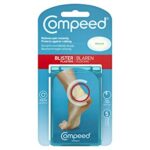 Who knows not the Compeed? This range of dressings that all good hiker will use one day where the other?
Who knows not the Compeed? This range of dressings that all good hiker will use one day where the other?
To avoid the friction of the foot in sensitive areas (heels, toes, etc.), my advice is to preemptively put a bandage in the right place, with the foot clean and dry, before departure. And even though I tried several types and brands of dressings, I swear by the Compeed: other bandages come off. And who says dressing off says risk of blisters. It's a shame…
The Compeed range is vast: I recommend this dressing in size medium for the heels.
9. – and if that is not enough…
And if, despite all that, the bulbs appear anyway?
It will not Pierce a blister "intact". Nothing better than to leave the protective liquid inside.
If the blister is punctured, it will cut off the dead skin with a pair of scissors previously disinfected. Then we can place this famous dressing Compeed, who will play the role of protection, Painkiller and which will facilitate the healing process. Do not attempt to snatch or take off a Compeed: it will detach itself 3-5 days after.
After all that, it remains for me to wish you good walks without bulbs!







